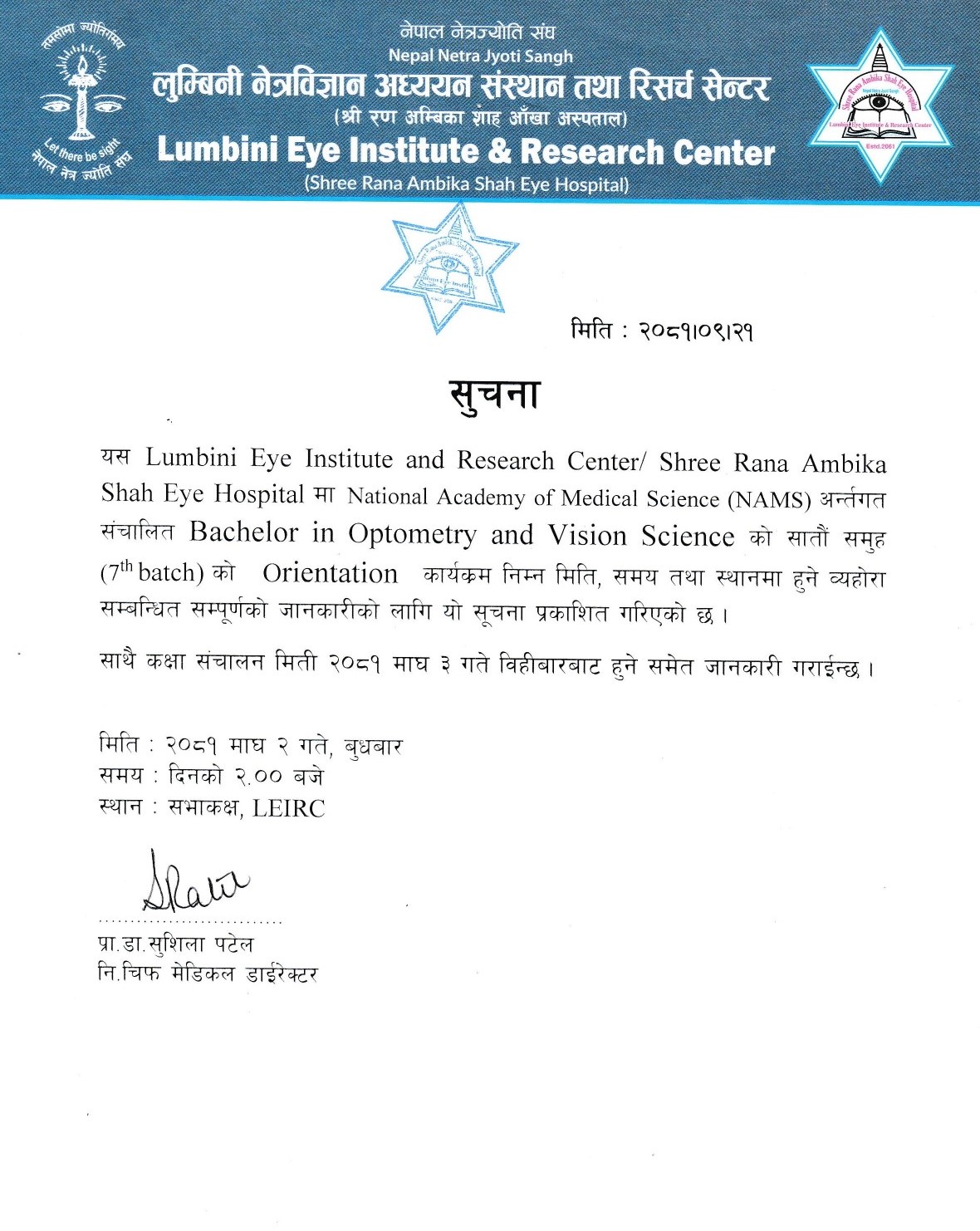Service Delivery level:
The existing,
- Primary level :
In the first level, the primary eye care services are provided at the grass root level throughhouse to house visit, school screening, screening camps atsub health post and health post levels which are vital components of primary eye care and treatment of eye disease. - District level :
Secondary level of eye care services are provided at the district level through primary eye carecenters where basic eye disease are treated, glasses are prescribed,out reach surgical camps are organized and special investigation are referred tobase eye hospital. - National level :
Tertiary eye care services along with high volume cataract surgery are provided at the national level at the Shree Rana-Ambika Shah eye hospital in Bhairahawa. The base hospital is now becoming a campus with the addition of the Lumbini Eye Institute (affiliated under National Academy of Medical Sciences), that offers education, training, research and improved rural service delivery. - International level :
Through training, consultation andhands on serving to increase the volume, quality and sustainability of national and international eye care programs and hospitals.
Demand Generation
In order to increased demand for services, following strategies to attain the goals will be aggressively pursued:
- System is devised that ensures patient friendly procedures and offering of prompt services to patients.
- Promotion of services is made applying every possible avenues including publicity through multimedia using local FM, promotion of outreach activities, developing of effective referral network, promotion through satisfied patients, good rapport with community etc.
- Field workers are appointed, trained and mobilized for case identification, counseling and advocacy on eye care health.
- Patients counseling service is strengthened and will be used as strategy for service marketing.
- “Cataract package tour to Lumbini”, as a promotional strategy “cataract package tour to Lumbini” for fixed price will be introduced. The fixed price will include cost for screening cataract patients, transport, food and surgical charge for the patients and one attendant as well. For this, tie up with NGOs and charitable organization in North India will be made.
- Subsidized pricing policy is adopted also for private cabin in the hospital in summer season when demand is low to increase bed occupancy rate.
- Reservation system for surgery is introduced as a measure for managing demand variability.
- In peak season, in order to manage demand variability, leave is granted only of the leave earned during peak season {December to February} except for emergency reasons, for all employees.
Quality Assurance:
Quality and Compassionate patient care
Networking:
The existing strong and close network with governmental and non governmental organizations like NNJS, SEVA, Lions Sight First,
Research Studies:
Continuous emphasis has been given in clinical and operational research and survey studies. Research on treatment and follow up modalities, surgical outcome and various implementation strategies are carried out and program strategies will be refined further on
Management system improvement:
To increase the management sophistication, competency of young managers will be raised with their participation in executive development Programme. Formulation of financial, personnel and general management policies and procedures will be made. Establishment of personnel department is made in the very first year of planning horizon. Initiatives will be taken for raising the level of employee motivation and teambuilding with their closer association at various management levels. With the development of MIS, supervision and monitoring of activities, programs and individual performance will be strengthened.

